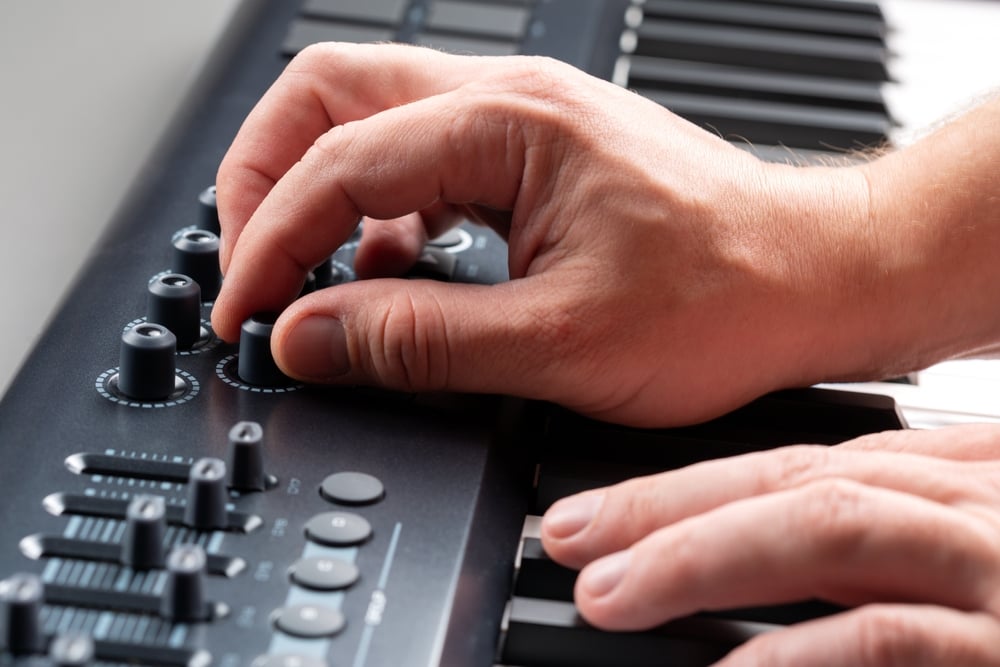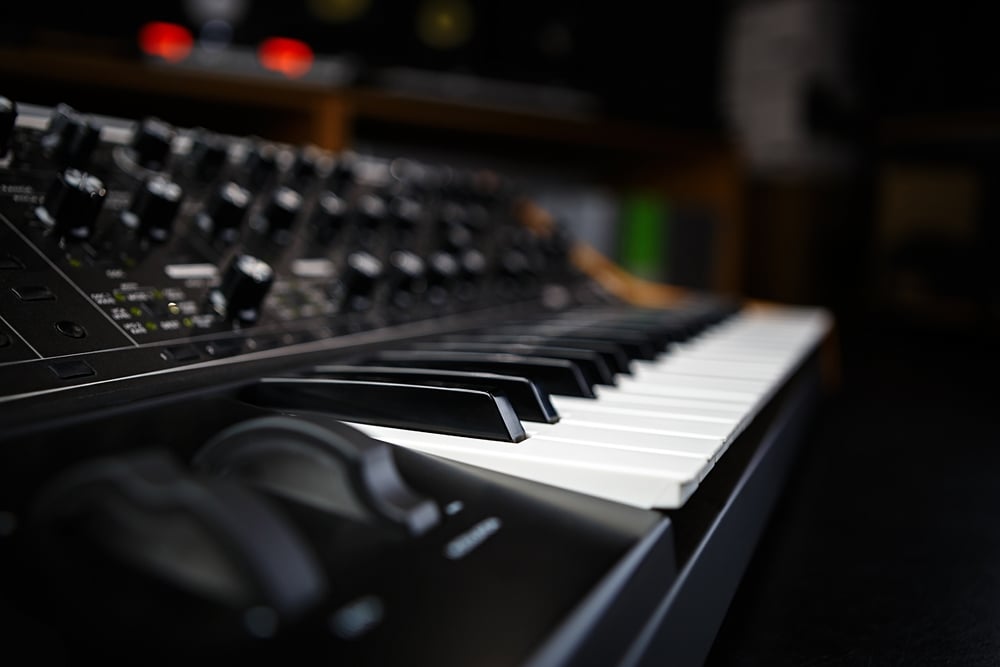How does a synthesizer work?
The basis of any synthesizer is a sound generator. It creates sound. The main advantage of the synthesizer compared to other instruments is the ability to select different sounds and combine them.
The number of sounds depends on the manufacturer, but there are about 400 of them in the instruments for home use. The standard set of sounds includes violin, saxophone, piano and other orchestra instruments.
To “synthesize” means to create something new, but often from existing pieces. If you still can't imagine how a synthesizer works, imagine that it creates new sounds by combining “old” sounds.
Types of synthesizers
When buying a synthesizer, you should pay attention not only to the price of the instrument, but also to quality factors. You can choose from several types of synthesizers.
Keyboard synthesizers look like ordinary keyboards or midi keyboards at first glance. However, they offer much more – a library of sounds, many controllers and built-in speakers. The keyboard synthesizer is available with a dynamic keyboard or a variant without dynamics. What does it mean?
- Synthesizers with a dynamic keyboard register the actual force of a keystroke.
- Synthesizers without a dynamic keyboard register full force regardless of the actual force of the keystroke.
Modular synthesizers do not have a classic keyboard. Instead, they have a set of buttons that represent different actions. Due to its dimensions, it is often referred to as pocket-sized. It's a great choice when you're looking for a synth for beginners.
Monophonic and polyphonic synthesizers
Monophonic synthesizers can create only one note at a time. When the next key is pressed, the two tones do not mix, only the last keystroke is played.
Polyphonic synthesizer can create and play multiple tones.
How do synthesizers modify sound?
The synthesizer creates and modifies the sound waves themselves, thus changing the sound we hear. It uses several specific tools for this.
VCO – oscillator
A VCO is a voltage-controlled oscillator that allows you to change the course and shape of sound waves. In the presets, you will find many options for adjusting the waves – rounding, dampening or highlighting the peaks.
VCF – filter section
Each synthesizer has a filter section. They manage the timbre of the sound. This includes overdrive, resonance, depth and other sound filters.
VCA - mixing and volume
The VCA module allows you to adjust the volume of audio signals. Like a VCO or VCF, adjustments are made by varying the voltage.

Other useful functions of synthesizers
Synthesizers are musical instruments that are excellent not only for beginners, but also for more experienced professionals. You can buy synthesizers with different functional equipment.
Which features are among the most useful?
- Vocoder converts human speech into a digital musical signal.
- Sequencer can play sets of sound signals (sequences) at a certain moment.
- MIDI In and MIDI Out are MIDI connectors that allow the synthesizer to be connected to a computer and a music program.
- Aftertouch is a keyboard function that registers changes in pressure after pressing a key or button.
- Built-in speakers allow the synthesizer to be used without the need to connect external speakers.
MUZIKER TIP:
Among the most popular and high-quality synthesizers are YAMAHA, ROLAND and KORG. They will charm you with precisely processed sound and numerous additional functions.
The difference between a MIDI keyboard and a synthesizer
Can't decide between a MIDI keyboard and a synthesizer? The main difference between a MIDI keyboard and a synthesizer is that the first type of device is less functional and requires a connection to a PC to play the generated sound.
The synthesizer is a separate device and in most cases definitely more functional.
Most modern synthesizer models include MIDI keyboard functionality - that is, it is possible to connect them to a PC, use the sound card's resources, and, if necessary, ensure that the generated sound is recorded to a file located on the computer.
How to choose a synthesizer?
When picking a new synthesizer, think about several factors. Be sure to pay attention not only to the price and quality, but above all, as with other instruments and products, also to the main use and functionality.
If you only think about trying the magic of synthesizers, playing with it or making your child happy, take a look at pocket or button synthesizers in the low to medium price range.
However, if you have decided on a career as a music composer or have big plans with music, we recommend a more professional piece with dynamics, lots of sounds and connection to a PC.
MUZIKER TIP:
Check out ASM Hydrasynth Keyboard. One of the most popular synthesizers for sound designers and musicians. It has 3 oscillators, 2 filters, 4 octaves and ergonomically shaped wheels. It can create up to 640 different sounds.
 Musical Instruments
Musical Instruments



 Water Sports
Water Sports




 default
default


